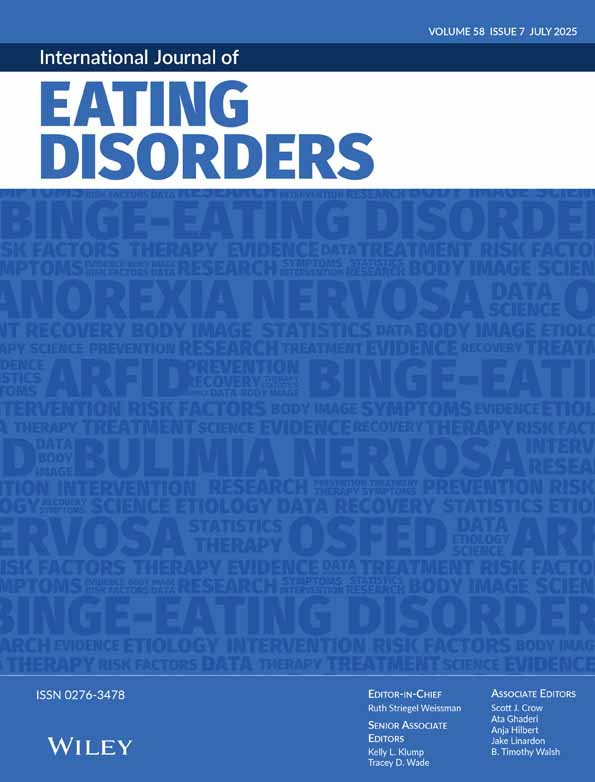Core beliefs and the presence or absence of eating disorder symptoms and depressive symptoms in adolescent girls
Abstract
Objective
Core beliefs specific to eating disorder and depressive symptoms were investigated in four groups of adolescent girls well matched on these symptoms.
Method
A total of 272 girls were included and two measures of core beliefs were compared. The measures were the Young Schema Questionnaire (YSQ) and the Negative Self-Beliefs subscale of the Eating Disorder Belief Questionnaire (EDBQ).
Results
One-way analyses of variance found that both measures distinguished a “healthy” group and a group high on depressed symptoms, but not one high on eating disorder symptoms. Both measures also distinguished the unhealthy group from a high eating disorder symptom group, but only the EDBQ subscale distinguished this group from the group high on depressive symptoms. Discriminant function analysis indicated that both measures identified beliefs specific to depression but only the EDBQ subscale was able to identify beliefs specific to eating disorder symptoms. These beliefs were I'm stupid and I'm ugly.
Discussion
In an analogue population at least, the EDBQ negative self-beliefs subscale may be a more sensitive measure of eating disorder related core beliefs than the YSQ. The practical difficulties of replicating the current study in a clinical population are discussed, and a next step is proposed for future research on this topic. © 2005 by Wiley Periodicals, Inc.




